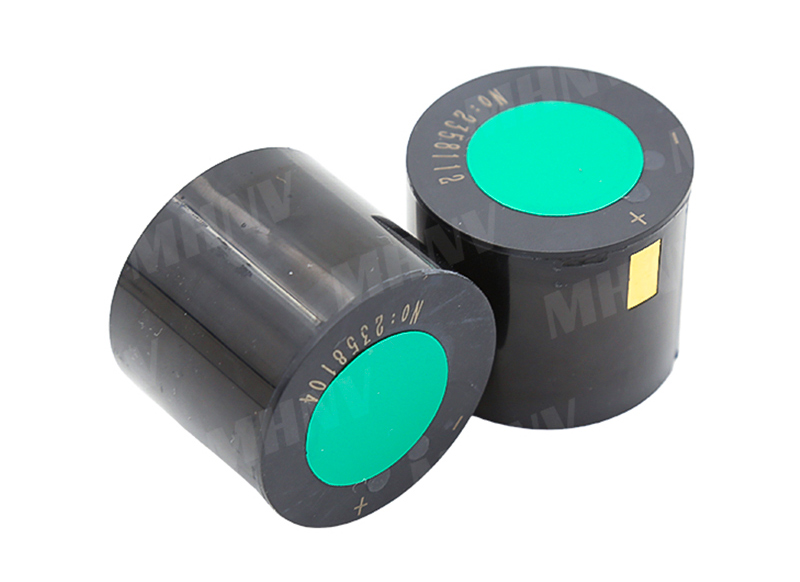December 11, 2024By: MH TECHView: 150

Manufacturing process and material quality
Photocathode material: The photocathode of the image intensifier tube is a key component that converts photons into electrons. High-quality photocathode materials, such as gallium arsenide (GaAs) used in the third-generation image intensifier tubes, have higher quantum efficiency and can convert photons more efficiently than some materials in the second-generation tubes. This not only affects the performance of the image intensifier tube, but also determines its service life to a certain extent. Better materials can withstand more photon bombardment and electron emission-absorption cycles, reducing the rate of material aging and performance degradation.
Microchannel plate (MCP) manufacturing process: MCP is the core part of the image intensifier tube to achieve electron multiplication. Advanced manufacturing processes can ensure that the channels of the MCP are uniform and the inner walls are smooth, thereby improving the efficiency and stability of electron multiplication. Fine manufacturing processes can make the MCP more effectively resist damage caused by electron bombardment during long-term use and extend the service life of the image intensifier tube. For example, high-quality MCP can reduce problems such as channel blockage or electron scattering, making the electron multiplication process in the channel smoother.
Packaging technology: Good packaging technology can prevent external environmental factors from affecting the internal components of the image intensifier tube. For example, a well-sealed package can block the entry of moisture, dust and harmful gases, avoid corrosion of the photocathode, blockage of the MCP and other problems. If the packaging materials and technology are not good, it may cause moisture inside the image intensifier tube, affecting its performance and shortening its service life.
Environmental conditions for use
Temperature:
Excessive temperature will accelerate the aging of electronic components inside the image intensifier tube. For example, when the ambient temperature exceeds the specified upper limit of the operating temperature (usually at a higher temperature), the sensitivity of the photocathode may decrease and the electron emission efficiency may decrease. At the same time, high temperature may also affect the performance of the MCP, causing abnormal electron multiplication process in the channel. On the contrary, in a low temperature environment, the battery performance decreases, and it may not be able to provide enough power for the image intensifier tube, and the internal materials may become brittle and prone to physical damage.
The normal operating temperature range is important for the life of the image intensifier tube, which is generally between - 30℃ and 50℃, and may vary slightly for different models. Beyond this range, the service life will be significantly affected.
Humidity:
High humidity environment is a key factor affecting the life of the image intensifier tube. When the relative humidity is greater than 80%, moisture can easily enter the interior of the image intensifier tube. This may corrode electronic components such as photocathodes and electrodes, reducing their performance. Moreover, the mist or water droplets formed by moisture on the optical surface will interfere with the light propagation and electron emission-multiplication process, and long-term high humidity environment will accelerate the damage of the image intensifier tube.
Dust and pollutants:
In an environment with more dust, tiny dust particles may enter the image intensifier tube. These dust may adhere to the surface of the optical lens, reducing the transmittance, and may also enter the interior through the gap, blocking the channel of the MCP, making the electron multiplication process unable to proceed normally. In addition, chemical pollutants such as smoke, corrosive gases, etc. can also damage the image intensifier tube and shorten its service life.
Usage and frequency
Power-on time and frequency:
Long-term continuous power-on will keep the electronic components of the image intensifier tube in a continuous working state, accelerating their aging. Especially for MCP, long-term electron bombardment may cause its performance to deteriorate, such as loss of channel wall material and reduction of electron multiplication factor. Frequent switching operations may also cause a certain impact on the image intensifier tube. The current impact at each power-on may damage the internal electronic components, such as filaments.
Brightness adjustment and overload use:
Improper brightness adjustment may affect the service life of the image intensifier tube. If the brightness is adjusted too high and exceeds the normal working range, components such as the photocathode and MCP will be subjected to excessive electron flow, accelerating their aging. In addition, when used in a strong light environment (such as directly facing a strong light source), the image intensifier tube may be overloaded. The large number of photons generated by the strong light will cause the photocathode and subsequent electron multiplication system to exceed their tolerance, resulting in component damage.
Maintenance measures
Cleaning:
It is essential to clean the optical surface of the image intensifier tube regularly. If impurities such as dirt and fingerprints accumulate on the optical surface for a long time, the light transmittance will be reduced, resulting in less light entering. At the same time, the chemicals in these impurities may corrode the optical coating and affect the optical performance. Improper cleaning methods, such as using rough materials to wipe the optical surface, may scratch the surface and destroy the optical flatness, which in turn affects the image quality and the service life of the enhancement tube.
Storage conditions:
Correct storage conditions can extend the life of the image intensifier tube. It should be stored in a dry, cool, well-ventilated environment, avoiding direct sunlight. If the storage environment temperature and humidity are not well controlled, it will cause the image intensifier tube to become damp or overheated, accelerating the aging of the components. In addition, mechanical vibration and collision should be avoided during storage to prevent internal components from shifting or being damaged.